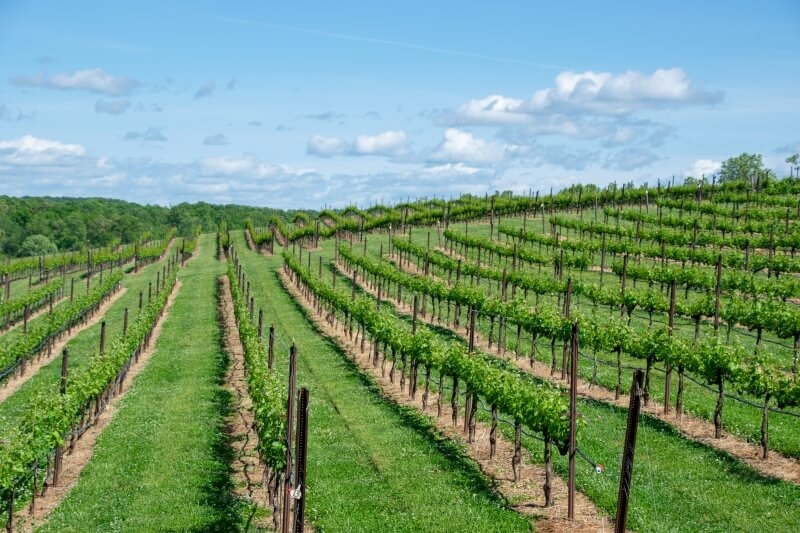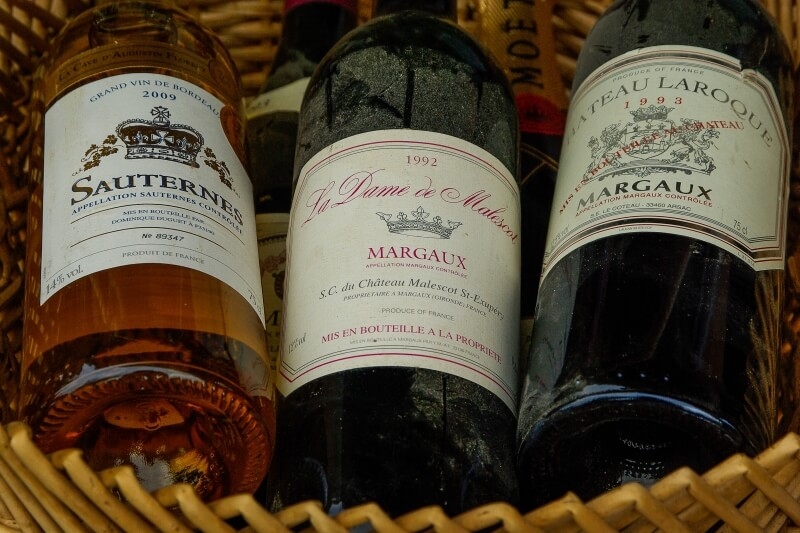Margaux and Cantenac, the most delicate of Médoc wines, are considered to produce the Médoc’s most polished and fragrant wines. Although the soil of Margaux is thin and gravelly, this allows the vines’ roots to penetrate the ground as deep as 23ft (7m) for their steady but meagre supply of water. The result is a wine that is often considered as the greatest and most exquisite claret of all.
If one had to single-out one Bordeaux commune to head the list, there would be no argument. It would have to be Pauillac. Châteaux Lafitte, Latour and Mouton Rothschild, three of its five superstar first growths, are its obvious claim. But many red Bordeaux wine enthusiasts would tell you that the wines of Pauillac have the quintessential flavour they look for – a combination of soft red fruit, oak, dryness, subtlety combined with substance, a touch of cigar box, a suggestion of sweetness and, above all, vigour and longevity. One-half of all cru classes in Médoc can be found in Pauillac. Wines tend to be quite individual, though they share full bodied characteristics. Some are supple with layers of fruit, whilst some have an intense blackcurrant, cigar-box flavour.
Although Pomerol is a new player in the firmament of Bordeaux wine, its most sought-after wines can fetch a high price. For the smallest wine producing area in the Bordeaux region, in all it is no bigger than St-Julien, it is generally agreed to be among the best in the whole of Bordeaux. Robust and hardy, Pomerol wines have an exclusive velvety quality. They are deep coloured and full-bodied, with a rich flavour, soft tannins and a hint of minerals.
The ancient and beautiful town of St-Emilion, sometimes referred to as “the Burgundy of Bordeaux,” is at the epicentre of what has recently been Bordeaux’s most seismic wine region and is amongst the most prestigious AOCs in the world. Behind the town, on the sandy and gravelly plateau, vines flow steadily on into Pomerol. Beside it, along the ridge, they sweep down steep limestone slopes (the Côtes) onto the plain. St-Emilion wines, considered the most robust of the Bordeaux vintages, are richly coloured and reach their maturity more quickly than other red Bordeaux wines. The grapes of St- Emilion are the plump Merlot and Cabernet Franc, and as such are softer and fruitier than the Médoc and Graves wines where Cabernet Sauvignon is King. St-Émilion is the oldest viticultural area of the region, having first been planted during the Roman occupation of Gaul.
 English
English
 Spanish
Spanish French
French German
German Norwegian
Norwegian Portuguese
Portuguese Swedish
Swedish Italian
Italian Russian
Russian Simplified Chinese
Simplified Chinese Japanese
Japanese






